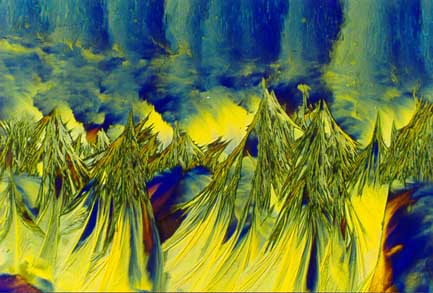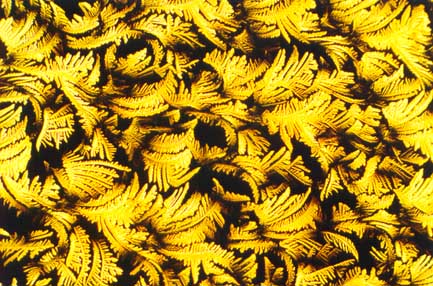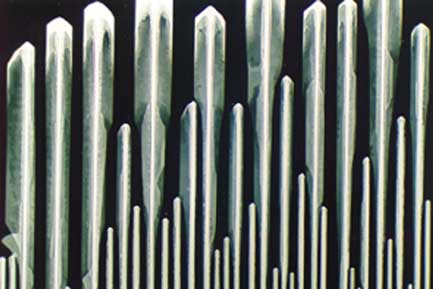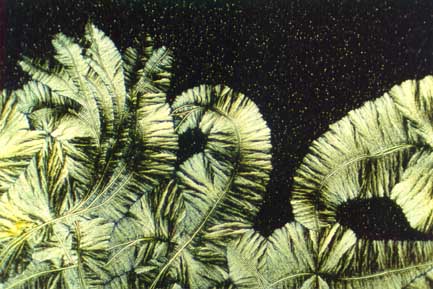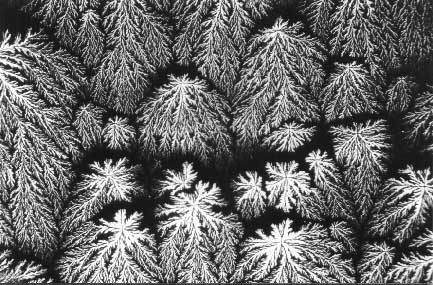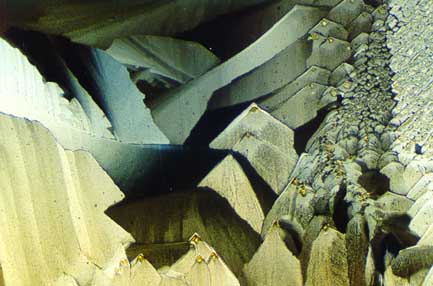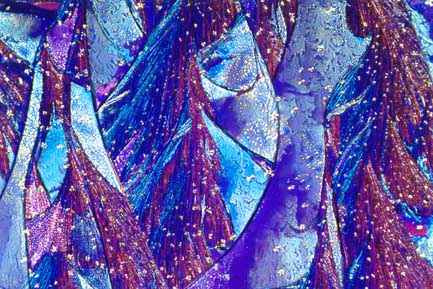Borax, arginine and hydroquinone. Just a lucky mixture. The sharp lines are typically borax. Magnification about 50x. Image 793-27 |
|
|
Glycine and dextrin. Glycine is very rewarding stuff; it curls. Dextrin has the effect of smoothing things up a bit. Their cooperation leads to beautiful plant-like structures (this time). The gold comes from removing the blue filter. Magnification about 80x. Image 696-03 |
Decalcifyer for your coffee machine. Bought on one of my tours through a drugstore. Slide left to crystallize by itself, and almost forgot about it. Surprise! These organpipes are a personal favorite. Magnification: 50x. Image 660-32 |
|
|
Soda and hydroquinone. Hydroquinone is a wonderful chemical, though toxic. When other chemicals refuse to crystallize, an added drop of hydrochinon sometimes works miracles. Soda is beautiful too, very easy to crystallize and always near at hand. Magnification: 50x. Image 716-00 |
Sodium bicarbonate in gelatine. Some chemicals are very nice when you try crystallizing them in a gel. Gelatine, dissolved in hot water to which the chemical is added, works well. But other gels, like hairgel or silica-gel are possible too. No heating, just put it away. These beautiful dendrite forms are reminiscent of trees laden with snow. Magnification: 50x. Image 503-11 |
|
|
Resorcinol. One of the best, and always produces nice and very recognizable crystals. Their sharp form makes it easy to visualize well known things, like this wintery landscape. Magnification: 50x. Image 712-23 |
Prednisone, vitamin B1 and urea. If a title was required for this one, it would be: Snowfall at Sunset. Or something like that. The snowflakes are created by the vitamin B1. Urea is wonderful stuff, and easy to combine with almost everything. Magnification about 80x. Image 843-08 |
|
